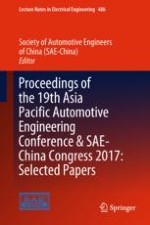2019 | OriginalPaper | Chapter
LP EGR Influence on Performance of Turbocharged Direct Injection Gasoline Engine
Authors : Hong Wei, Lianbao Li, Lin Yang, Narendra Purania, Xuehai Qin, Huacheng Zhou, Dongya Chen, Xiaoli Tian, Yunlong Kuang, Ruiping Wang
Published in: Proceedings of the 19th Asia Pacific Automotive Engineering Conference & SAE-China Congress 2017: Selected Papers
Publisher: Springer Singapore
Activate our intelligent search to find suitable subject content or patents.
Select sections of text to find matching patents with Artificial Intelligence. powered by
Select sections of text to find additional relevant content using AI-assisted search. powered by
